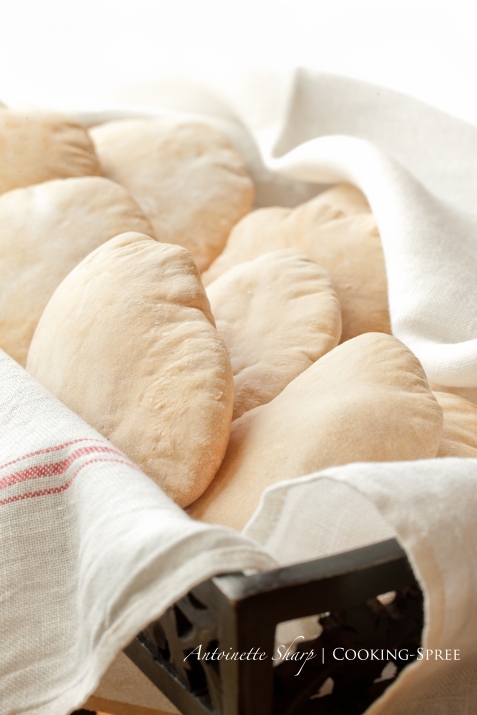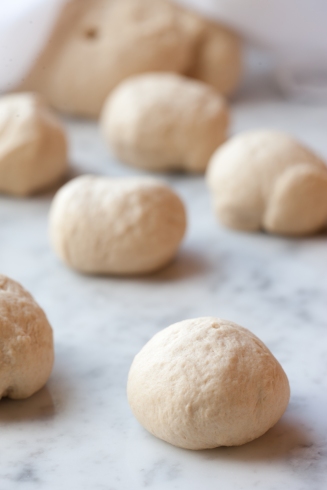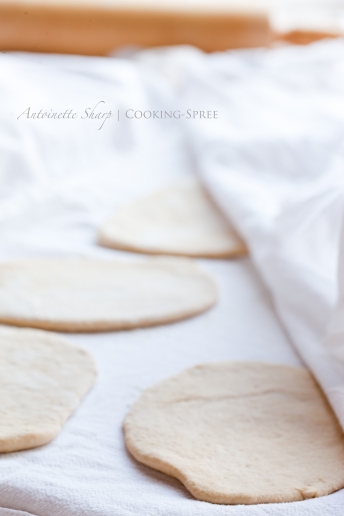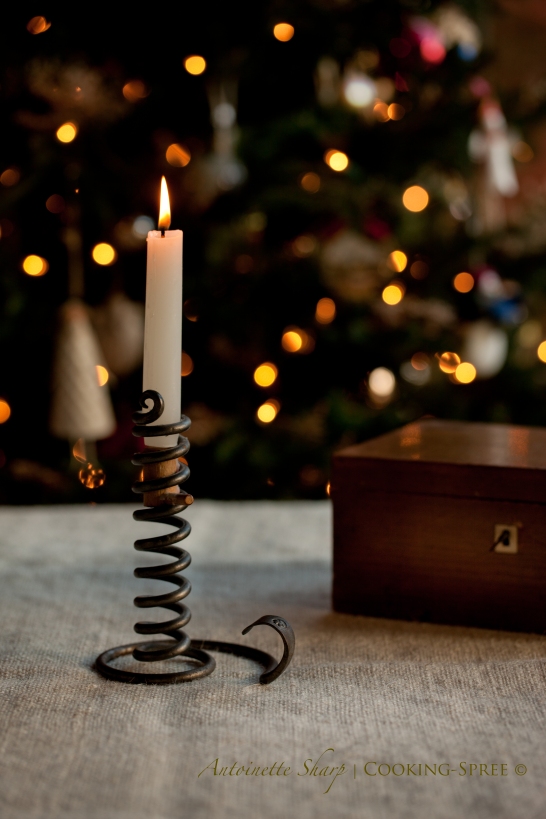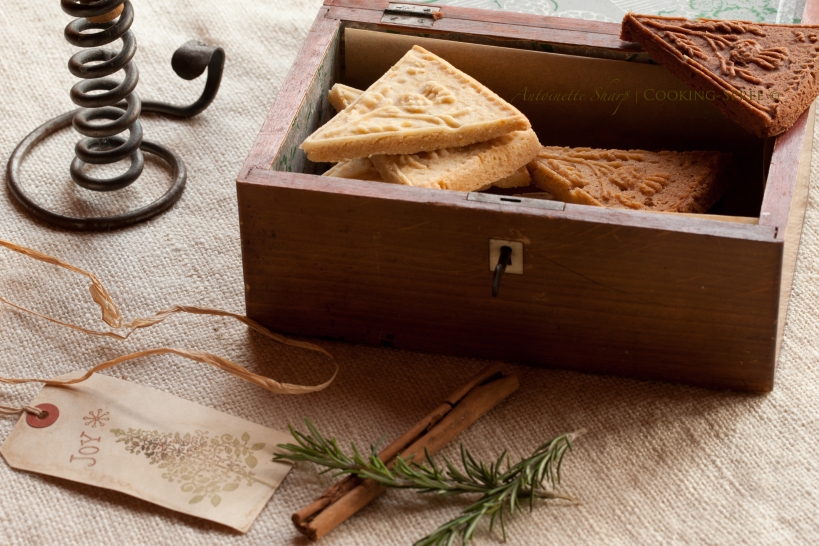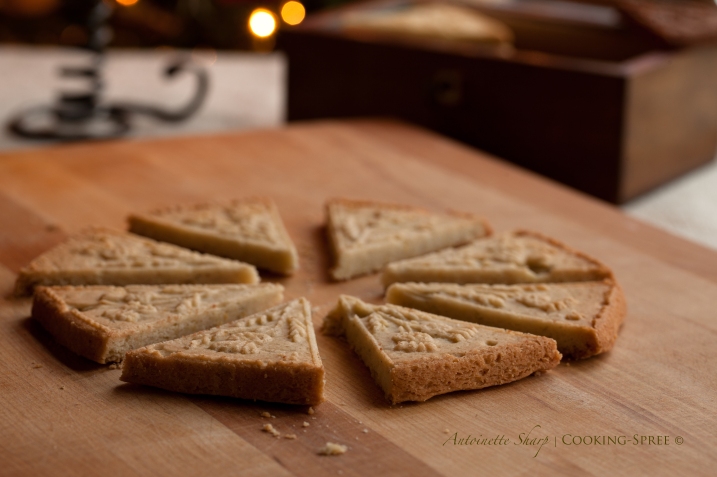on pita & filling our pockets
Making your own pocket bread may not be the thing for you. Do you have some leisure hours on one of your weekend days that you might like to spend playing with soft little pillows of dough? Do you find it a thing of pleasure to create something from scratch, something you can easily grab off the shelf, machine-made and already shrink-wrapped for you in plastic? Would it thrill you (just a tiny bit?) to watch flat pancakes fill like hot-air balloons in your oven while the aromas of a bakery fill your house? hmmm! – well –
then…
Pita – from your own oven
_____
makes 16 pita pockets
___________
1 Tablespoon active dry yeast (or 1 package)
2½ cups lukewarm water
¼ teaspoon sugar
Approximately 6 cups unbleached white bread flour (or unbleached all-purpose flour)
1½ – 2 teaspoons salt
3 Tablespoons vegetable or extra-virgin olive oil
__________
Into a large bowl, pour ½ cup of warm water and stir in the yeast to dissolve. Add the sugar. When the mixture begins to froth (proving that the yeast is still lively) stir in the remaining 2 cups of water. Gradually add 3 cups of flour, 1 cup at a time, stirring vigorously. (You may either do this by hand, or with a stand-mixer.) You’ve now made a “sponge”. Allow it to rest for 10 minutes, or until it too froths.
Stir in the salt and 2 Tablespoons of the oil and mix together well. Gradually add the remaining flour – you may need less than the total amount specified – once you have a dough that holds together into a ball and isn’t sticking wetly to your hands, you’ve added enough flour.
(Because the flour hydrates gradually – and depends on ambient humidity amongst other things – if you add large amounts of flour all at once, you can overshoot the mark. All would not be lost…just add a bit more water – gradually – to find that happy balance.)
Knead well by hand in the bowl, or on a floured board, ten minutes or so; or in a stand mixer using the dough hook for maybe 7 minutes. You’re looking for a smooth, shiny and elastic dough that no longer sticks to your fingers when held for several seconds. Dust with a bit more flour occasionally if it proves too sticky. Form it into a ball.
Put the remaining tablespoon of oil into the bowl and roll the ball of dough around so as to grease it all over. (This prevents a crust from forming on it.) Cover the bowl with plastic wrap and leave in a comfy warm place free of drafts for about 2 hours, until doubled in bulk.
Preheat the oven to 500°F (260°C), placing a large baking sheet in the hottest part. (Generally about ¼ of the way up from the bottom.) Allow it to preheat for 20 minutes.
Punch the dough down and then knead again for several minutes. Divide the dough in half. Divide the first half into 8 “equal” lumps and roll these into balls.
On a lightly floured surface, using either your hands or a rolling pin dusted with flour, flatten each lump into a “pancake” about 7 or 8 inches across and 1/8 to ¼-inch thick. Spread a kitchen towel on your counter and sprinkle it with flour. Dust each of the rounds with flour and arrange on the cloth, leaving an inch between them. Cover these with another flour-dusted cloth and allow them to rest for 20 minutes at room temperature. (If your counter is particularly cold, you could leave them to rest them slightly longer.)
________

